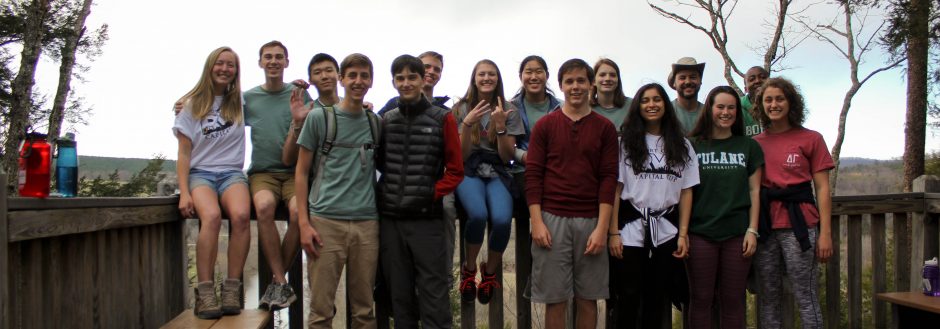Walking alongside Westhampton Lake with my fellow Earthlodgers, I contemplated the reflection of the sky and trees in the lake’s waters. The water was murky that day, and the image was blurred and fuzzy. It got me thinking about perception.
You’re likely aware of the phenomenon known as Upside-Down Lake. In case you don’t, it is when one lies down on the brick divider next on the walkway alongside the Commons with their head dangling backwards over the edge, so that they are looking at the lake upside down. It’s the most fun to do it at night, because the reflection of the stars, trees, and lights are brightest when it’s dark out. When I was walking alongside the lake with the Earthlodgers, I considered the difference between the fuzzy, blurred reflection I saw in front of me and the crystal-clear, nearly flawless reflection of the lake I saw at night. And I began to think about peoples’ perception of the lake as a whole, regardless of the time of night or day.
To most people on campus, the lake is more than a body of water. But every person’s appreciation has developed for different reasons, and on their own time. To me, the lake is a kind of therapist. I have strolled countless laps around the lake during stressful times, or when I have needed to work a few things out. Some people have a deep spiritual connection with the lake. Others have amazing memories of their years in college locked in the mud along the lake’s shores. And for some, it is simply a beautiful place to enjoy spending time with one’s family on a gorgeous Richmond day. One of my favorite things to observe in walking around the lake is children’s reaction it. Their appreciation of the lake is so pure, so innocent, that one cannot help but smile as the little ones totter by.
Everybody perceives the lake uniquely and appreciates it in their own way, just as the lake appears different in the night and day. I look forward to discovering my fellow classmates’ perceptions.
